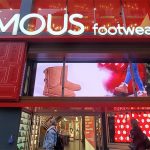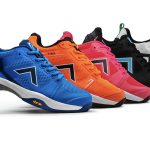On the plus side, results for the fourth quarter are still expected to be significantly in excess any previous-year fourth quarter, as the company benefits from manufacturing-cost reductions from its capital expenditure programs and lower cotton costs, combined with continuing top-line growth in sales revenues in both operating segments.
Gildan also noted that it resumed a trajectory of EPS growth in the third quarter, after three quarters in which results were negatively impacted by the misalignment in the timing of lower printwear selling prices and the delayed benefit of lower manufacturing and cotton costs. The improved earnings performance reflected unit sales volume growth and operating margin expansion.
“While sales growth was constrained in our branded apparel business unit by continuing lower retailer inventory replenishment, together with soft demand related to the back-to-school period, we continued to grow the presence of the Gildan brand in the quarter, with sales of Gildan branded products increasing 30 percent,” said Rod Harries, executive vice president, chief financial and administrative officer, on a conference call with analysts. “In printwear, unit sales volumes in the U.S. market grew 6 percent, and international sales recovered strongly during the quarter.”
In the quarter, earnings nudged up 0.3 percent to $123.1 million, or 50 cents a share. Excluding restructuring and acquisition-related costs of approximately $3.3 million after-tax in the quarter relating primarily to the integration of acquisitions, earnings were up 2.9 percent to $126.4 million, or 52 cents, a year ago.
Adjusted earnings were in line with EPS in the range of 51 to 53 cents previously provided as the impact of lower-than-anticipated Branded Apparel sales was offset mainly by higher-than-projected net selling prices and more favorable product-mix for printwear compared to the company's previous projection.
Consolidated operating profit margins improved 130 basis points to 19.2 percent. The increase reflected the return to historical operating margin levels for printwear and a significant increase in branded apparel operating margins compared to last year. Overall, higher unit sales volumes and lower manufacturing costs in the quarter more than offset lower net selling prices and unfavorable product-mix for printwear, due to the later timing of fleece shipments, and increases in SG&A, financial and income tax expenses.
Revenues in the quarter grew 1.3 percent to $674.5 million but missed the company’s guidance calling for sales close to $700 million. The shortfall was mainly due to lower-than-anticipated branded apparel sales, which were impacted by continuing lower-than-anticipated inventory replenishment by a major U.S. retail customer and weaker-than-anticipated demand during the back-to-school period.
By segment, printwear sales inched up 1.1 percent to $440.5 million. Continued unit volume growth in the U.S. printwear market, the impact of the acquisition of Comfort Colors and unit sales volume growth of approximately 13 percent in international printwear markets more than offset lower net selling prices and unfavorable product-mix and currency headwinds.
Printwear unit sales volume growth reflected the benefit of pricing actions taken last December and continued penetration in the high-valued, higher growth fashion basics and performance segments of the U.S. printwear market, including the impact of the acquisition of Comfort Colors, which continued to perform strongly. Sales in Europe recovered with growth momentum building throughout the quarter, and the company continued to achieve strong growth in Asia Pacific.
Operating income in Printwear increased 4.6 percent to $124.4 million. The gains were mainly due to lower manufacturing and cotton costs, as well as the acquisition of Comfort Colors, partially offset by lower net selling prices for printwear, unfavorable product-mix due to the timing of fleece sales compared with last year and the negative impact of the decline of international currencies relative to the U.S. dollar.
In the branded apparel segment, sales were up 1.7 percent to $234 million. The gains reflected an increase of approximately 30 percent in sales of Gildan branded programs, including the impact of converting private label programs, as well as increased sales of licensed and global lifestyle brands, which more than offset lower sales of private label and Gold Toe branded products. Continued lower inventory replenishment for Gildan branded underwear and the weaker than anticipated back-to-school period negatively impacted Gildan's sales.
Market share for Gildan branded men's underwear remained in excess of 7 percent for September while market share for Gildan branded men's socks for September was 14 percent, giving it the number two position in that category.
Operating income in branded apparel jumped 34.2 percent to $30.2 million. The gains reflected lower manufacturing and cotton costs, including the non-recurrence of the transitional manufacturing costs incurred in 2014. The year-over-year improvement in operating margins was partially offset by higher SG&A expenses due mainly to higher marketing and advertising expenses.
For the full year, Gildan is now projecting adjusted EPS to be in the range of $1.46 to $1.48, down from guidance of $1.50 previously. Sales are expected to be close to $2.55 billion, down from $2.6 billion.
Sales in printwear are now projected to be close to 10 percent compared to the company's previous projection of printwear sales growth in excess of 10 percent. The change reflects an unfavorable product-mix in the fourth quarter as warmer seasonal weather is expected to result in lower seasonal sales of high-value fleece and long-sleeve T-shirts.
Branded apparel sales growth is now expected to be approximately 12 percent, down from 15 percent previously due to the Q3 shortfall and the assumption of the continuing impact of issues with retailer inventory replenishment combined with soft retail market conditions in the fourth quarter.
For the fourth quarter, Gildan is projecting adjusted diluted EPS of 28 to 30 cents a share, on projected sales revenues in excess of $500 million, compared with an adjusted net loss of 15 cents on sales revenues of $390.6 million in the corresponding quarter of the prior year.
–Tom Ryan















